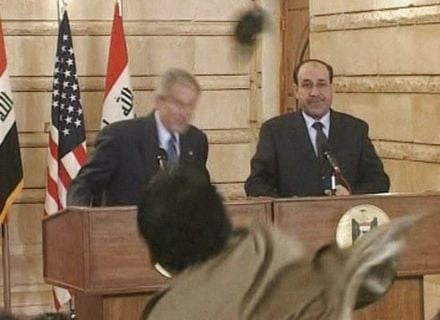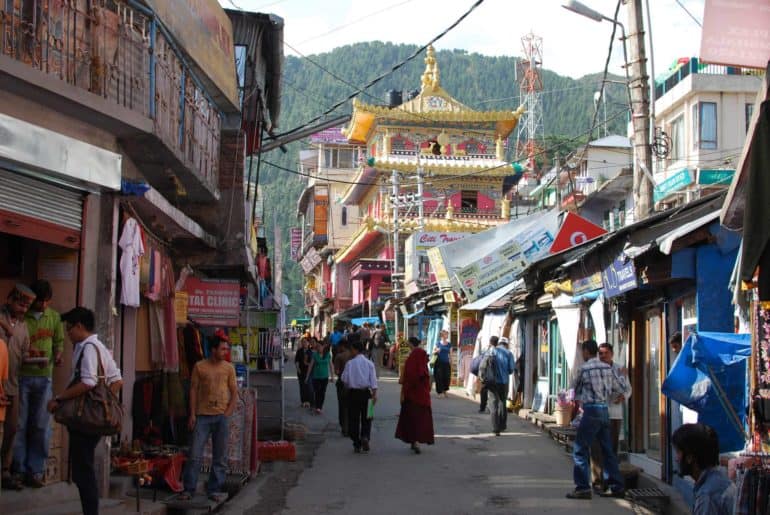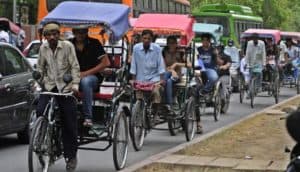Four long years have passed since the last Olympic Games, and now they’re back with a bang. Set in London, this year promises to be filled with an expansive array of sports and powerful athletes from 204 nations across the world. With a spectacular three-hour opening ceremony directed by Danny Boyle, complete with a James Bond style sequence of the queen jumping off a helicopter, there is no doubt left in anyone’s mind that International sports is going to get bigger and better as the years go by. That stands true even when it comes to the athletes across the globe. Their training, fitness, and supporting equipment seem to be managed with utmost care and precision, leading to their shining performances on an international platform, no matter how unique their sport.
Turning the page to Indian athletes, the pitiful condition of past award winners is heart wrenching. Santhi Soundarajan, who bestowed a proud India with a silver medal at the Doha Asian Games, had no idea that her dignity would be reduced to dust eight years later. Stripped off her laurels and now working at a brick kiln, her achievements faded into oblivion after failing a gender test. Pinki Pramanik, who won a gold medal for her country at the Asian Games in 2006 and a silver medal at the Commonwealth Games in the same year, now works as a ticket collector for the Indian Railways. Furthermore, her former housemate accused her of being a man and raping her. All that is left is a feeling of shock and disgrace when these events are contrasted to a similar situation in South Africa, where athlete Caster Semenya was also shamed for the same reason as Soundarajan. In this case, the ban on Semenya was revoked due to the overwhelming support given to her by her fellow citizens. Now she holds her head high, as she is the beaming flag bearer of South Africa at the Summer Olympics 2012, while our gifted athletes are suffering in abject poverty with their achievements gone to waste.
Athletes who fail the questionable gender tests are not the only ones suffering in India. Veterans such as the ‘Payyoli Express’, better known as P.T. Usha who has won almost 101 international awards and runs a school for athletes, now works for the Indian Railways and survives on a meagre pay. World cup Kabbadi coaches such as Majit Kaur fends for himself by begging on the streets as government organisations failed to honour him with the promise they had made of a permanent job after retirement. Usha Rani, who brought home a medal in Archery, was forced to sell her bow to provide food for her impoverished family. These heroes, along with many more gone unnoticed, who took the name of our country to soaring heights during their glory years, are now forced to fund their own way without any support or backup by the state, leaving such sports personnel in abysmal conditions.
When you flip to the other side of the spectrum, cricketing stars and elite athletes such as shooters and boxers are fortunate enough to be showered with a royal treatment. As much as they deserve it, when compared to the conditions of the poorer section of the society whose talented individuals are far removed from the fame, support and training they necessarily need, the public turns a blind eye on the fact that rural areas are actually a potential goldmine for sporting activities. Boxers such as Vijender Singh have been catapulted to celebrity status due to an astonishing gold at the last Olympics, making way for a cult of boxing aspirants ready to outshine him and make their country proud. However, the same cannot be said for the pre-mentioned forms of sport as no initiative is taken to extract the wealth from these athletes. Instead, they are left to prepare for their own accommodation and adjust to tattered equipment as they struggle to train for major sporting events.
Despite our country’s blissful ignorance to the plight of these sportsmen and women, they still keep the flag flying high as they push past their paralysing boundaries and break the thin thread that separates a win from a loss. With proper thought put into the upliftment of their condition and regulated training given to these rising heroes, they are sure to bring home innumerable trophies, another yardstick to measure the underlying talent hidden in every corner of India.




 Picture source: Reuters
As the sun rose over the country this morning, a large part of North India found itself in the middle of the worst power outage in ten years. Citizens of New Delhi, Punjab, Haryana, Rajasthan, Uttar Pradesh, Uttarakhand, Himachal Pradesh and Jammu & Kashmir were left with with no power supply in their homes to carry out day to day activities. Majority of the nation was especially brought to a standstill as all other activities halted due to lack of electricity. Inter- state transport, water supply and public transport faced the brunt of this power cut.
In New Delhi, the metro services suffered as stations were locked out and people were left stranded. Looking closely at the plight of DU Students, as the Delhi Metro (an impetus for commuting) had come to an abrupt halt- students had to rely on over- crowded busses, auto rickshaws or cars on Delhi roads, which already happened to be clogged with traffic.
Adding to their misery, once the students did make the perilous journey to college they discovered that classes had either been cancelled or postponed. “It was horrible, in fact horrible is an understatement. We were squished in the over crowded bus, a friend of mine was on the verge of crying. We had to get off halfway and take an auto- only to find out that classes had been cancelled.” said Riya Anna Kuruvilla, a first year student from Hindu college who had to travel from Dwarka to North Campus.
“I took the metro for granted as I used to travel by it since day one, today I had to take a bus. Being new to this route it was tough for me, but owing to the power cut, I could discover an alternate way of commuting!” Shreya Mudgil, a first year English Hons. student from Bharti College added.
Thanks to the prowess of the authorities most of the electricity supply did return soon bringing life back to normal; however the morning was a bit of a jolt to the whole of North India.
Deepali Datta a first year student from LSR made an uncanny observation she said, “An interesting side of Delhi emerged today as everybody became everybody’s Google Map, people gave way to pedestrians despite faulty traffic lights. Some students like me, did miss out on the attendance for the first lecture, but the lesson learnt was worth it, nothing can stop a city like Delhi. One grid collapsed but another emerged- the People’s Grid.”
A pat on the back to all Delhiites- students, parents, office goers alike- who did made it to their respective duties on time and did not abort any of the city’s activities! And DU students who did manage to get the whole day’s attendance deserve special mention here, don’t they?
Anugrah Gopinath
Picture source: Reuters
As the sun rose over the country this morning, a large part of North India found itself in the middle of the worst power outage in ten years. Citizens of New Delhi, Punjab, Haryana, Rajasthan, Uttar Pradesh, Uttarakhand, Himachal Pradesh and Jammu & Kashmir were left with with no power supply in their homes to carry out day to day activities. Majority of the nation was especially brought to a standstill as all other activities halted due to lack of electricity. Inter- state transport, water supply and public transport faced the brunt of this power cut.
In New Delhi, the metro services suffered as stations were locked out and people were left stranded. Looking closely at the plight of DU Students, as the Delhi Metro (an impetus for commuting) had come to an abrupt halt- students had to rely on over- crowded busses, auto rickshaws or cars on Delhi roads, which already happened to be clogged with traffic.
Adding to their misery, once the students did make the perilous journey to college they discovered that classes had either been cancelled or postponed. “It was horrible, in fact horrible is an understatement. We were squished in the over crowded bus, a friend of mine was on the verge of crying. We had to get off halfway and take an auto- only to find out that classes had been cancelled.” said Riya Anna Kuruvilla, a first year student from Hindu college who had to travel from Dwarka to North Campus.
“I took the metro for granted as I used to travel by it since day one, today I had to take a bus. Being new to this route it was tough for me, but owing to the power cut, I could discover an alternate way of commuting!” Shreya Mudgil, a first year English Hons. student from Bharti College added.
Thanks to the prowess of the authorities most of the electricity supply did return soon bringing life back to normal; however the morning was a bit of a jolt to the whole of North India.
Deepali Datta a first year student from LSR made an uncanny observation she said, “An interesting side of Delhi emerged today as everybody became everybody’s Google Map, people gave way to pedestrians despite faulty traffic lights. Some students like me, did miss out on the attendance for the first lecture, but the lesson learnt was worth it, nothing can stop a city like Delhi. One grid collapsed but another emerged- the People’s Grid.”
A pat on the back to all Delhiites- students, parents, office goers alike- who did made it to their respective duties on time and did not abort any of the city’s activities! And DU students who did manage to get the whole day’s attendance deserve special mention here, don’t they?
Anugrah Gopinath
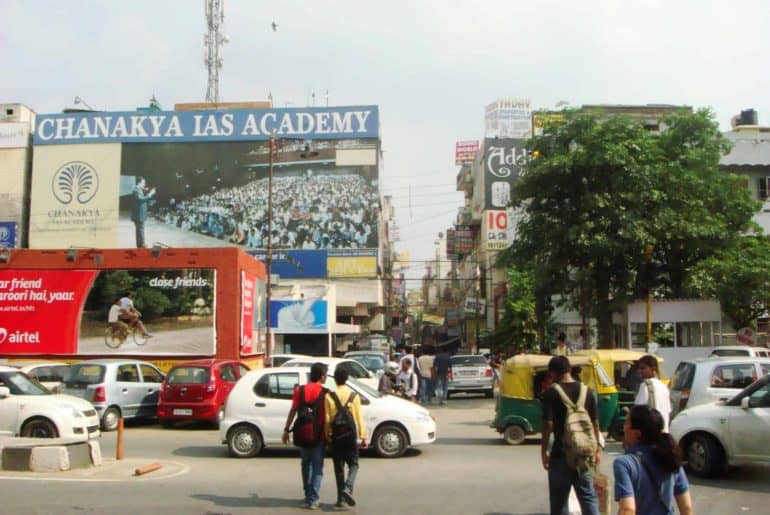
 [/caption]
South Campus is often looked upon as North Campus’ poor cousin; the cousin with few ‘cool’ colleges and not much to offer. But this is only a common misconception. There’s no doubting the fact that South can give North a run for its money any day. Not only does it have some of the best colleges but also some of the coolest hangout zones.
Satya Niketan is a shining example of exactly that. It’s South Campus’ answer to their Kamla Nagar, or KNags, as they prefer to call it. It is inarguably the most preferred hangout spot for the South Campus folks. There is nothing else that could possibly explain why students from Venky, JMC, DCAC, Maitreyi, RLA etc. flock to it every day.
Known for its hookah parlours, Satya Niketan is also famous for its amazing food. And the variety is mind boggling! 34 Chowringhee Lane needs absolutely no introduction for there is no greater sin for a South Campus student than missing out on their rolls, a sin that can never be atoned. Missing out on the mouth watering rolls which are a specialty of the market is just an added disadvantage.
The tandoori momos from QD’s, the yummy milk shakes and Maggi from Keventers, the burgers from Bake Day… the list of the delicious food available is endless. The folks here are also open to experimenting with different cuisines as is proven by the newly opened Naga eatery, Essence of the East. But for those who like to play it safe, there’s also Pizza Hut and CCD.
Another major attraction here is the string of pool parlours and gaming arcades. Not only does it prove to be a stress buster for most students, it also serves as a convenient place for them to hang out when they want to bunk classes but don’t know where to go.
The only drawback, the market has limited options for shopping. However, a few boutiques have recently opened up here but whether or not they get good business is something that only time will tell. And even if it doesn’t, Sarojini Nagar will always remain a stone’s throw away.
Surya Rajappan
[/caption]
South Campus is often looked upon as North Campus’ poor cousin; the cousin with few ‘cool’ colleges and not much to offer. But this is only a common misconception. There’s no doubting the fact that South can give North a run for its money any day. Not only does it have some of the best colleges but also some of the coolest hangout zones.
Satya Niketan is a shining example of exactly that. It’s South Campus’ answer to their Kamla Nagar, or KNags, as they prefer to call it. It is inarguably the most preferred hangout spot for the South Campus folks. There is nothing else that could possibly explain why students from Venky, JMC, DCAC, Maitreyi, RLA etc. flock to it every day.
Known for its hookah parlours, Satya Niketan is also famous for its amazing food. And the variety is mind boggling! 34 Chowringhee Lane needs absolutely no introduction for there is no greater sin for a South Campus student than missing out on their rolls, a sin that can never be atoned. Missing out on the mouth watering rolls which are a specialty of the market is just an added disadvantage.
The tandoori momos from QD’s, the yummy milk shakes and Maggi from Keventers, the burgers from Bake Day… the list of the delicious food available is endless. The folks here are also open to experimenting with different cuisines as is proven by the newly opened Naga eatery, Essence of the East. But for those who like to play it safe, there’s also Pizza Hut and CCD.
Another major attraction here is the string of pool parlours and gaming arcades. Not only does it prove to be a stress buster for most students, it also serves as a convenient place for them to hang out when they want to bunk classes but don’t know where to go.
The only drawback, the market has limited options for shopping. However, a few boutiques have recently opened up here but whether or not they get good business is something that only time will tell. And even if it doesn’t, Sarojini Nagar will always remain a stone’s throw away.
Surya Rajappan
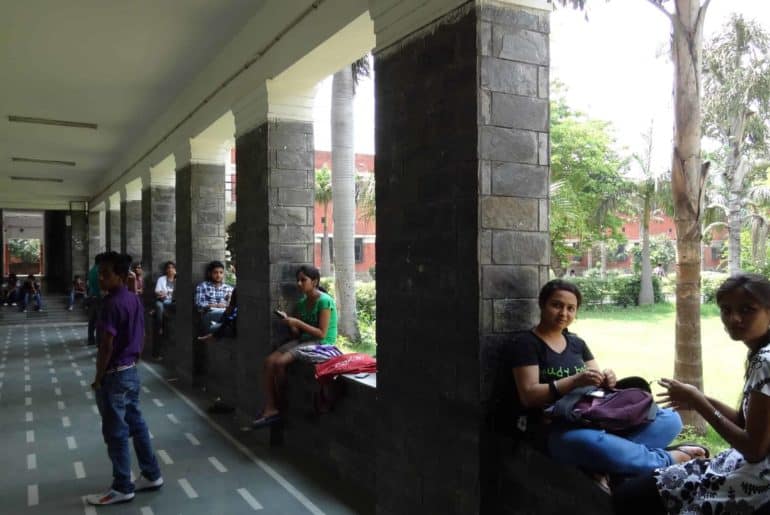
 54,000 students take admission in Delhi University every year. But are they all of the same kind? I don’t think so. Here I take a look at the very many facets of this unique species called “fresher”, spotted only in and around the DU campus!
(1) The “rag me!” – These freshers are the ones who come to experience the quintessential Delhi University life. They are so interested in trying out everything that is “so DU”, that they even want to be ragged! I encountered one such fresher during my college orientation; she actually stood up and told her seniors, “I want to be ragged. Shall I do a dance number?”
(2) The “chilled out!” – These types of freshers are not even remotely scared of their professors. They never submit assignments on time, their course book probably wouldn’t show signs of human touch and their short attendance would probably be excused with an easy medical certificate. They believe that college is a place where one should just take it slow, and they certainly are in no hurry to end the post-boards-enjoyment-break.
(3) The geek and nerd – The type of freshers who their college studies seriously are the ones who are mapped in this category. The only problem is, a bit too seriously. They’re always found in the library or with a professor, trying to gain an even higher level of expertise in their respective skills. No doubt, the Sheldon Coopers of DU excel in academics and are likely to get placed in a good job, but some amount of fun wouldn’t cause any harm, would it?
(4) The “I will try for every college society” – These kinds of freshers are exactly the opposite of nerds. They take every ounce of advantage that DU’s vibrant ECA circuit provides. They will audition for almost every society, and try to participate in as many activities as the college allows them to be in. They make their presence felt and are usually quite popular in their respective colleges. Probably a rare sight in classrooms, their professors might not recognize them if they ever enter the classroom (if they get a break from rehearsals that is).
(5) The social activist – This category of freshers usually comprises of the ones who aim to join politics in future. They are rarely involved in extracurricular activities, but try to make the most of student unions, organizations, Parliaments. They aim to make it to ABVP or NSUI, and hope to become the DUSU president in their final year.
(6) The “trying to fit in” – This division of freshers try hard to fit in and gel with the crowd. But at times, their efforts become a wee bit over-the-top. They will shop till they drop. Looking for the trendiest bags, tops, jewelry and other stuff that comes with a “popular in DU” tag. However, after some time, the excitement wears out and people come back to the evergreen jeans and tee combo.
See what category you fit into and tell us!
P.S. in case you’re wondering what category I belong to, I’m a mix of category 3 and 4!
Picture credits: Additi Seth]]>
54,000 students take admission in Delhi University every year. But are they all of the same kind? I don’t think so. Here I take a look at the very many facets of this unique species called “fresher”, spotted only in and around the DU campus!
(1) The “rag me!” – These freshers are the ones who come to experience the quintessential Delhi University life. They are so interested in trying out everything that is “so DU”, that they even want to be ragged! I encountered one such fresher during my college orientation; she actually stood up and told her seniors, “I want to be ragged. Shall I do a dance number?”
(2) The “chilled out!” – These types of freshers are not even remotely scared of their professors. They never submit assignments on time, their course book probably wouldn’t show signs of human touch and their short attendance would probably be excused with an easy medical certificate. They believe that college is a place where one should just take it slow, and they certainly are in no hurry to end the post-boards-enjoyment-break.
(3) The geek and nerd – The type of freshers who their college studies seriously are the ones who are mapped in this category. The only problem is, a bit too seriously. They’re always found in the library or with a professor, trying to gain an even higher level of expertise in their respective skills. No doubt, the Sheldon Coopers of DU excel in academics and are likely to get placed in a good job, but some amount of fun wouldn’t cause any harm, would it?
(4) The “I will try for every college society” – These kinds of freshers are exactly the opposite of nerds. They take every ounce of advantage that DU’s vibrant ECA circuit provides. They will audition for almost every society, and try to participate in as many activities as the college allows them to be in. They make their presence felt and are usually quite popular in their respective colleges. Probably a rare sight in classrooms, their professors might not recognize them if they ever enter the classroom (if they get a break from rehearsals that is).
(5) The social activist – This category of freshers usually comprises of the ones who aim to join politics in future. They are rarely involved in extracurricular activities, but try to make the most of student unions, organizations, Parliaments. They aim to make it to ABVP or NSUI, and hope to become the DUSU president in their final year.
(6) The “trying to fit in” – This division of freshers try hard to fit in and gel with the crowd. But at times, their efforts become a wee bit over-the-top. They will shop till they drop. Looking for the trendiest bags, tops, jewelry and other stuff that comes with a “popular in DU” tag. However, after some time, the excitement wears out and people come back to the evergreen jeans and tee combo.
See what category you fit into and tell us!
P.S. in case you’re wondering what category I belong to, I’m a mix of category 3 and 4!
Picture credits: Additi Seth]]> 